
For the third time in the past 30 years, home run rates are skyrocketing around college baseball. And for the third time in the past 30 years, it likely means that something is happening with the equipment.
In 2023, teams are averaging 1.13 home runs per game, which will set the all-time NCAA record. Even if there is not one home run hit in Omaha, the all-time Division I record of 1.08 home runs per game, set in 1998 at the peak of the "drop 5" era of metal bats, will be smashed.
That leads to the simplest of questions: Why?
When the home run rate soared in the late 1990s, and again in the late 2000s, there were those who said it was because of improved training and player development and the rise of steroid use-but then the equipment changed and the home run rate quickly receded.
The last significant rules-based equipment change came in 2016, when the seams on baseballs were reduced to try to bring home runs back into the game. In 2014, just two players in college baseball topped 20 home runs. Just 10 teams hit at least 50. That year, teams averaged 0.39 home runs per game.
This year, 25 individual players were averaging 0.39 home runs per game or more, and 25 teams have hit 100 or more home runs.
There are a multitude of reasons for this, but we're going to look at the three most frequently mentioned reasons for the home run surge and examine why they make sense.
1. IT'S THE BALL
Many believe that the baseballs used in 2023 are "hotter" than those used in past years. Multiple coaches said that, anecdotally, they believe the baseballs are a key part of the home run surge.
If the drag of the baseball is just a little lower-something that can easily stay within the allowed parameters for a legal baseball-it would lead to extra distance on fly balls.
هذه القصة مأخوذة من طبعة June - July 2023 من Baseball America.
ابدأ النسخة التجريبية المجانية من Magzter GOLD لمدة 7 أيام للوصول إلى آلاف القصص المتميزة المنسقة وأكثر من 9,000 مجلة وصحيفة.
بالفعل مشترك ? تسجيل الدخول
هذه القصة مأخوذة من طبعة June - July 2023 من Baseball America.
ابدأ النسخة التجريبية المجانية من Magzter GOLD لمدة 7 أيام للوصول إلى آلاف القصص المتميزة المنسقة وأكثر من 9,000 مجلة وصحيفة.
بالفعل مشترك? تسجيل الدخول
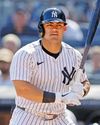
THE SERVICE TIME CONUNDRUM
MLB’s byzantine service time rules cloud rookie status and now PPI eligibility
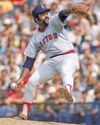
LUIS TIANT WAS MLB'S MOST SUCCESSFUL CUBAN PITCHER
On a scouting trip to Cuba in 1957, Bobby Avila discovered 16-year-old righthander Luis Tiant on the island's Juvenile League all-star team.
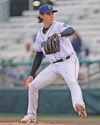
ORGANIZATION REPORT
Outfielder Heston Kjerstad's career has been unique, to say the least.

TOP 10 NL EAST
From the moment Thomas White stepped on a high school mound, he was viewed as the top lefthander available in the 2023 draft.

PREPARATION PAYS OFF
lowa politician J.D. Scholten makes a surprising return to pro ball at age 44

MAKING THE GRADE
Assessing the future value of graduated National League prospects
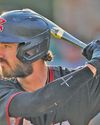
TOP 10 NL WEST
Even in high school, Bryce Eldridge could hit the ball a mile. The 6-foot-7 righthander could also touch 96 mph off the mound.
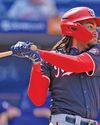
Wood Has Towering Upside- Nationals rookie James Wood also stands 6-foot-7 and also has game-changing power.
Aaron Judge and Oneil Cruz are 6-foot7 sluggers who stand out for their power in this year’s MLB Best Tools voting. Wood spent half of this season with Triple-A Rochester before making his MLB debut on July 1. While he was in the International League, he captured managers’ attention. Wood unanimously won Best Power Prospect and also claimed Most Exciting Player in a survey of league skippers. Wood hit .353/.463/.595 with 10 home runs in 52 games for Rochester. His .242 isolated slugging was the best for a player 21 or younger at Triple-A this season.
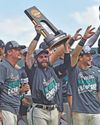
ROAD BLOCK?
Scholarship expansion puts mid-majors at a major disadvantage on the road to Omaha

ROYALS REVIVAL
A revamped and rejuvenated farm system has Kansas City ready to rebound